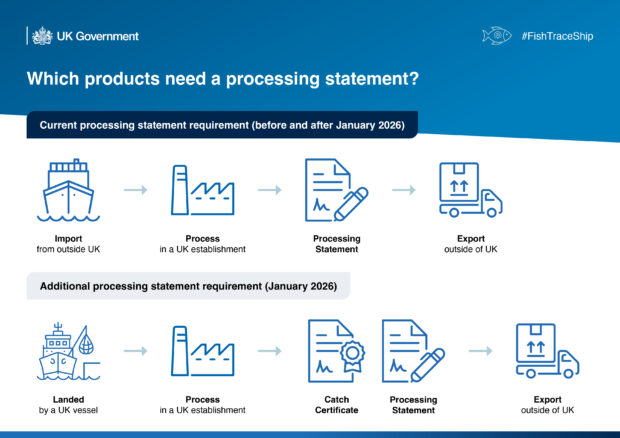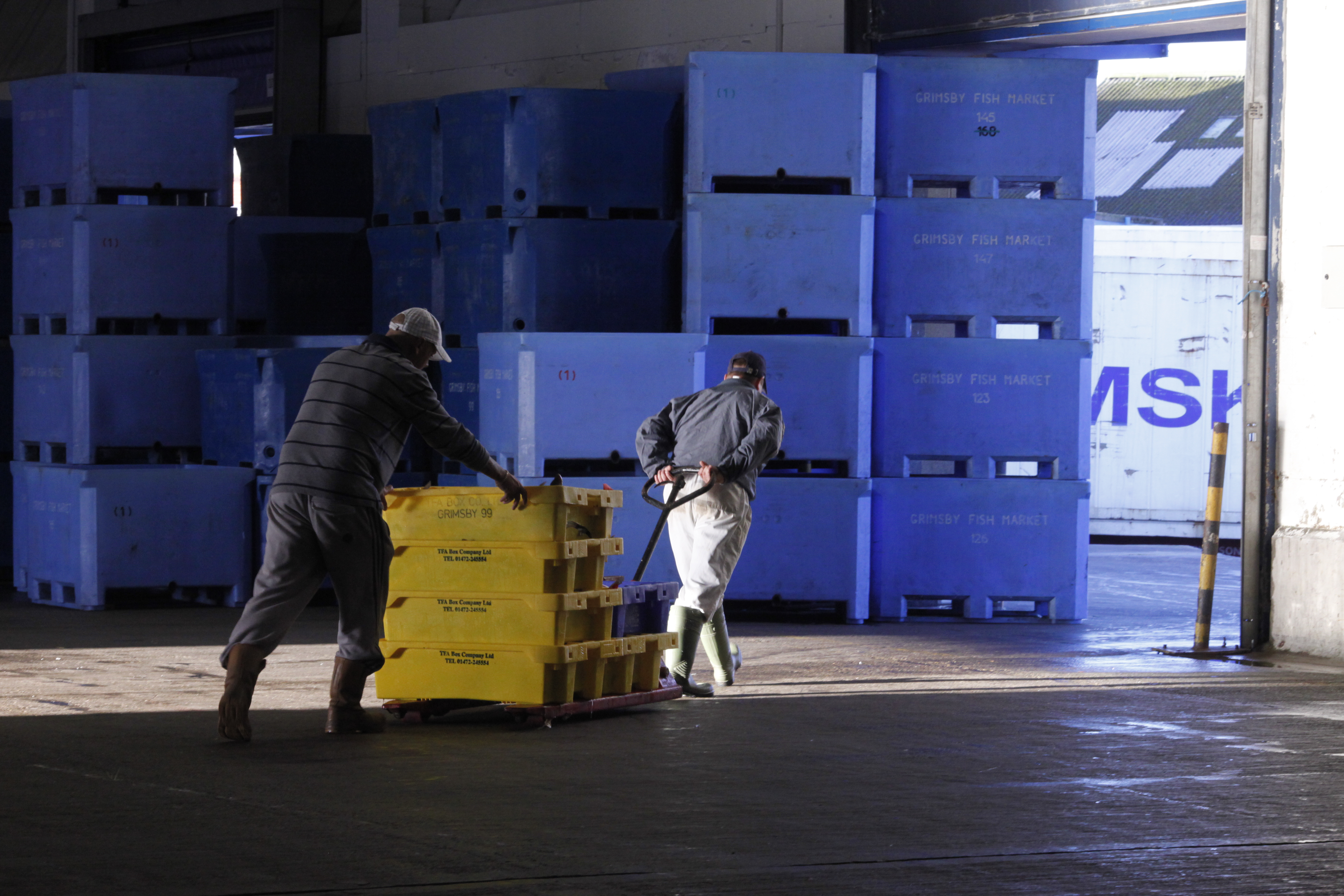Many in the fishing industry are aware that EU IUU regulatory changes are on the horizon. But one crucial component of these changes requires more attention: processing statements. From 10 January 2026, far more businesses will need them than ever before.
What’s changing
New requirement from January 2026: If fish is landed in the UK and then processed in the UK before export, you’ll need both a Catch Certificate AND a processing statement.
Multiple plants: If you use more than one processing plant, you’ll need a separate statement for each.
You do not require a processing statement for any processing that took place onboard the vessel prior to landing.
What counts as “processing”
From 10 January 2026 a processing statement will be needed for the following actions undertaken on land in the UK: cutting, filleting, canning, smoking, salting, cooking, pickling, drying, or preparing fish for market in any other way.
Freezing, washing, or packing alone do not require a processing statement.


Image credit: @Seafish
What exporters must do from January 2026
Comply with the requirements of the following documents:
- Catch Certificate – certifies the landed weight, presentation and state of fish to be exported, prior to any processing on land.
- Processing Statement – documents any processing activity after landing in the UK and the resulting product. It is linked to the catch certificate.
Both types of document will be required if processing has taken place after landing, to support an export. If no processing has occurred since landing, then a catch certificate will suffice.
If you export products that were caught outside of the UK, and imported before being processed here, you will continue as usual to create a processing statement.
Why this matters
- Ensures compliance
- Provides clear traceability for fish and seafood.
- Avoids delays or refusals at export due to missing documentation.

What you’ll need for a processing statement
- Government Gateway user ID and password
- Exporter details (company name, address)
- Consignment details with EU tariff codes
- Health certificate number
- Species, catch certificate number(s), and weights (before and after processing)
- Processing plant details and approval number
Preparing now
Although the requirement doesn’t kick in until 10 January 2026, fishers, processors and exporters should start familiarising themselves with the changes now.
The bottom line
If you export fish landed in the UK and processed here before export, you will need a processing statement as well as a catch certificate. Check out whether the new rules will apply to you – don’t leave it to the last minute and find exports are delayed or refused because of missing documentation. Find out more and access further support and guidance through our Fish Trace Ship campaign: Fish, Trace, Ship - Act Now! Are you on board?
Leave a comment